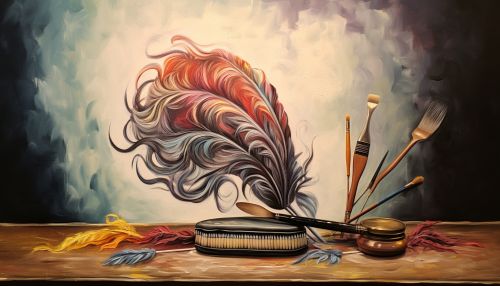Cognitive Psychology and its Impact on the Arts
Introduction
Cognitive psychology is a branch of psychology that studies mental processes including how people think, perceive, remember, and learn. As part of the larger field of cognitive science, this branch of psychology is related to other disciplines including neuroscience, philosophy, and linguistics. The impact of cognitive psychology on the arts is a topic that has been explored extensively, particularly in the areas of visual art, music, and literature. This article will delve into the intricate relationship between cognitive psychology and the arts, exploring how our cognitive processes influence and are influenced by artistic expression.


Cognitive Psychology: An Overview
Cognitive psychology is primarily concerned with the scientific study of the mind as an information processor. Cognitive psychologists often utilize an information-processing model to describe how the mind works, suggesting that the brain stores and processes information much like a computer. This model proposes that information is input through the senses, processed by the brain, and then behavior is output. Key areas of focus within cognitive psychology include perception, memory, attention, language, decision-making, and problem-solving Learn more about Cognitive Psychology.
The Impact of Cognitive Psychology on Visual Art
Visual art, whether it be painting, sculpture, photography, or any other medium, is a powerful means of communication and expression. Cognitive psychology has greatly influenced the understanding of how we perceive and interpret visual art. The study of perception, one of the key areas of focus in cognitive psychology, has particularly contributed to our understanding of visual art. Perception involves the organization, interpretation, and understanding of sensory information, and cognitive psychologists have used this understanding to explore how we perceive and interpret art Learn more about Perception.
For instance, the Gestalt principles of perception, which emphasize the tendency of the human brain to perceive patterns, have been applied to the study of visual art. These principles suggest that our perception is not just a sum of sensory inputs but rather a complex process where we actively construct our own interpretation of the world. This has implications for how we interpret visual art, suggesting that our perception of an artwork is not just based on the individual elements of the piece, but also on how these elements are arranged and how they interact with each other.
Cognitive Psychology and Music
Music, like visual art, is a form of expression that can evoke powerful emotions and reactions. Cognitive psychology has provided valuable insights into how we perceive and interpret music. For instance, the study of memory in cognitive psychology has greatly contributed to our understanding of how we remember and recognize musical pieces. This includes the exploration of concepts such as chunking, where information is broken down into manageable 'chunks' to aid memory, and schema, where existing knowledge structures in our brain help us to organize new information Learn more about Memory.
In addition, cognitive psychology has also explored the emotional response to music. Theories such as the 'Meyer's theory of emotion and music', propose that our emotional response to music is based on our cognitive appraisal of the music. This suggests that our emotional reaction to a piece of music is not just a direct response to the sounds we hear, but also involves our cognitive interpretation of these sounds.
Cognitive Psychology and Literature
Literature, whether it be novels, poetry, or plays, is another form of artistic expression that has been influenced by cognitive psychology. The study of language in cognitive psychology, for instance, has greatly contributed to our understanding of how we interpret and understand literature. This includes the exploration of concepts such as semantics, the study of meaning in language, and syntax, the study of the structure of sentences Learn more about Language.
In addition, cognitive psychology has also contributed to the study of narrative comprehension, or how we understand and make sense of stories. This involves the exploration of concepts such as mental models, where we construct a mental representation of the story in our mind, and inference, where we fill in gaps in the story based on our existing knowledge and expectations.
Conclusion
Cognitive psychology has had a significant impact on the arts, providing valuable insights into how we perceive, interpret, and respond to various forms of artistic expression. By exploring key areas such as perception, memory, emotion, and language, cognitive psychology has deepened our understanding of the complex relationship between the mind and art.
